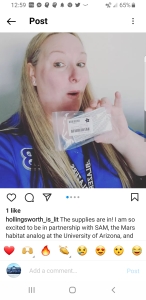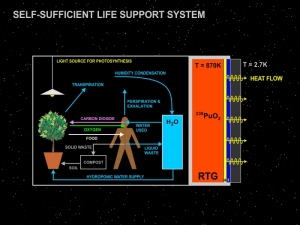Mars Colony Project in Brunswick, Maine – COUNTDOWN

The Classrooms of Karin Paquin, Suzi Ring and Stephanie Millette
St. John’s Catholic School and Brunswick Jr. High, Brunswick, Maine
a STREAM Project
Take your yearlong learning and apply it in developing a Mars Colony that would sustain a minimum of 4 humans. You will utilize skills from science and math to help you design your habitat, determine what crops to grow, calculate food needed to survive until crop harvest, and maintain a suitable atmosphere inside the habitat for 4 humans. You will then apply what you have learned in religion, history, and ELA to bring this experience full circle. This project will compile all the knowledge you have learned throughout the year and allow you to test ideas in the SIMOC (Scalable, Interactive Model of an Off-world Community) simulation software. Finally, you will share this at Curriculum Night on May 24 with students, parents, and the greater school community.
As described in an April post, Karin, Suzi, and Stephanie have built an entire year of multi-disciplinary learning around the design, modeling, and testing of a Mars habitat for her middle school students. And now, just 18 hours from the final presentation, the students are preparing to share with their classmates all they have learned.
Visit the project websites Karin and Suzi and Stephanie for this incredible, dynamic program built around SIMOC and Karin’s innovative learning experience. Here is the breakdown of what her students have accomplished:
- Pre-Mission Task: Patch Design
- Task One: Habitat Design
- Disciples ONLY Task Two: Getting Materials to Mars
- Task Three: Calculating daily caloric intake and determining what crops to grow based on human caloric needs and cellular respiration
- Task Four: Maintaining a suitable atmosphere for humans
- Task 5: Religion: How humans will respond to being in space for so long (at St. Johns school, but not Brunswick Jr. High)
- Task 6: Humanity: How history has played a role in the advancements in technology needed to colonize Mars
- Task 7: 3D build colony
- Task 8: Reflections
- Task 9: Train Like an Astronaut
- Task 10: Make a Playlist
Good luck! And we hope your astronauts survive!




 Science educator and writer Dan Heim answers the question, “I know there’s water ice on the Moon and Mars, and I get how it can be melted and used for drinking, but I don’t get how they can make rocket fuel out of it. — WJ, Provo, UT”
Science educator and writer Dan Heim answers the question, “I know there’s water ice on the Moon and Mars, and I get how it can be melted and used for drinking, but I don’t get how they can make rocket fuel out of it. — WJ, Provo, UT”